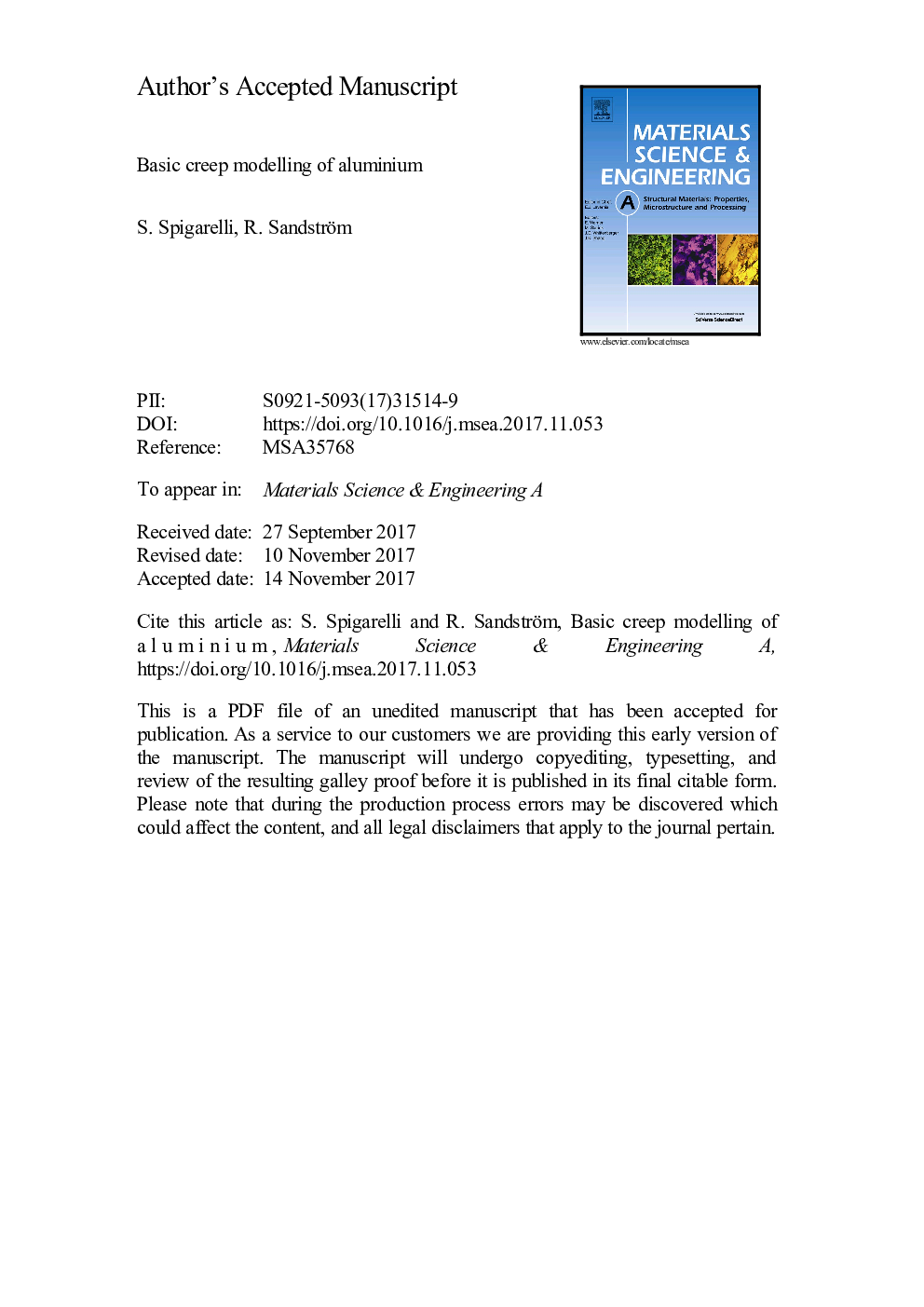| Article ID | Journal | Published Year | Pages | File Type |
|---|---|---|---|---|
| 7974264 | Materials Science and Engineering: A | 2018 | 35 Pages |
Abstract
In recent years a basic creep model that does not involve adjustable parameters has been developed. The main feature of this model is that it is fully predictable and the assumptions at its basis can be easily verified once the output is compared with experimental data. This model, initially developed for pure copper, has been here applied to pure aluminium. A critical issue has been identified with the controlling mechanisms during power-law breakdown. The increase in the creep rate at high stresses and low temperatures can be quantitatively explained from the raised climb rate due to the deformation-induced increase in concentration of vacancies. The model can also account for the fairly wide range of stresses where aluminium follows power-law creep with a creep exponent of 4-5. At slightly lower stresses, the creep exponent increases somewhat due to the presence of an internal stress. Since no adjustable parameters have been required, the model represents a notable enhancement over the conventional approach, which is based on the use of the power-law equation and requires fitting of experimental data to determine the values of the material parameters.
Related Topics
Physical Sciences and Engineering
Materials Science
Materials Science (General)
Authors
S. Spigarelli, R. Sandström,
